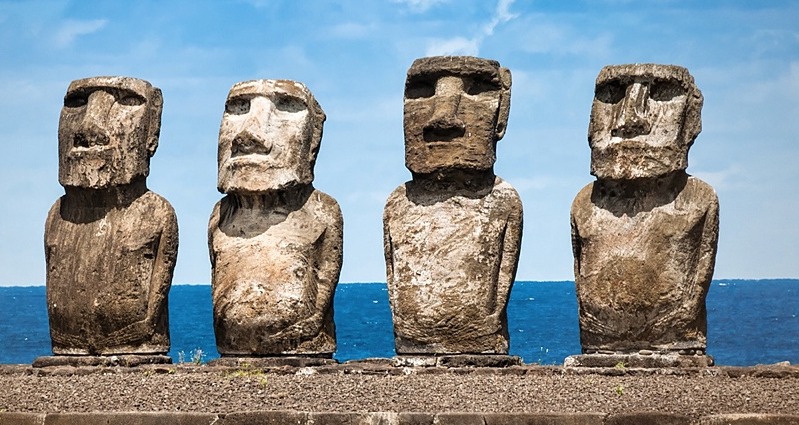Easter Island is home to 887 monolithic carvings, called moai statues.
The moai were built by the Rapa Nui, who were native to the island, somewhere between the years 1400-1650.
The largest of the moai weigh up to 86 tons and can be as much as 30 feet tall, although the average size is about half that big, according to Easter Island Travel.
The statues are made from volcanic tuff, which is partially fused and cemented volcanic ash, which means it’s fairly easy to shape, but also extremely heavy.
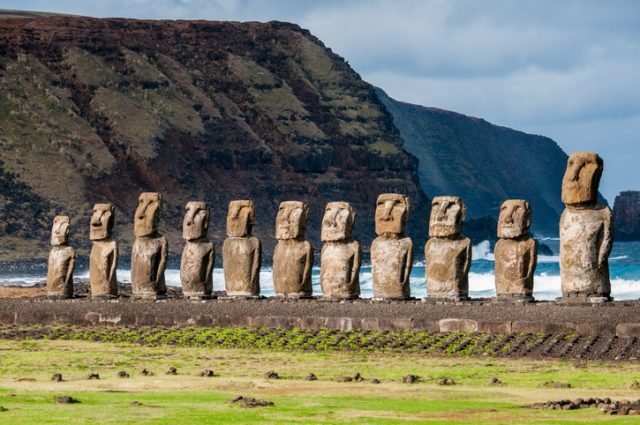
It was quarried up the slope of the extinct volcano on the island.
It’s assumed that the statues were mostly carved while lying flat on their backs, with the backs only finished when the statue was complete and set upright.
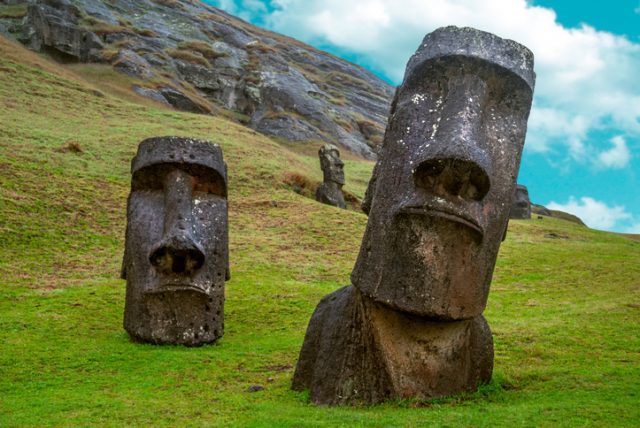
When the statues were finished, islanders would place them around the island.
There are some theories suggesting that they were moved to their final resting places using platforms rolled on logs, but other theories suggest that the finished works could have been rocked and “walked” to their final positions, using just manpower and rope.
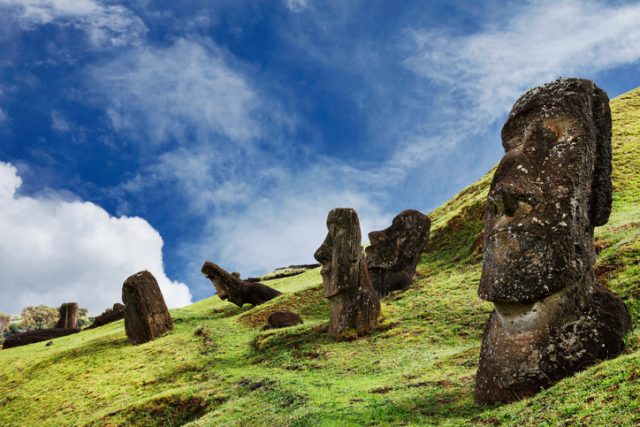
Many of the statues were first thought to just be enormous heads or head-and-shoulders busts, but research shows they are far more than that.
First and foremost, archaeologists have discovered that the statues that appeared to be just heads are actually attached to bodies, according to Forbes.
Over the centuries since the statues were erected, sediment and rocks from upslope have slowly buried the statues, leaving only the heads visible.
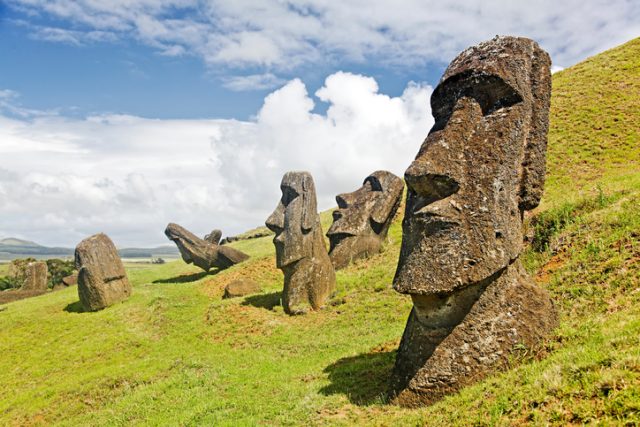
A group of archaeologists from UCLA started the Easter Island Project, and have been excavating the buried forms.
That may explain how the statues came to be, but why did they end up placed where they did?
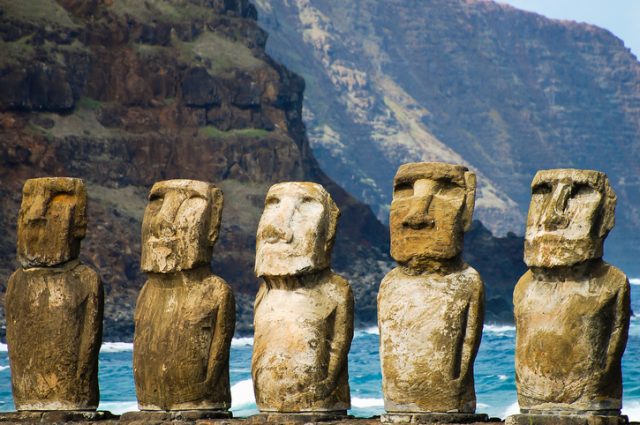
Newsweek reported that another group of researchers, headed by anthropologist Carl Lipo, is answering that question. Lipo has been studying the Rapa Nui and why they disappeared from the island for the past 20 years.
One of the issues which sparked his curiosity was how a population managed to survive on an island with so little drinking water. Average rainfall for the island is only about 48 inches a year, and there aren’t a lot of springs or other freshwater sources.
Lipo and his colleagues began doing field studies to try to figure out how the Rapa Nui might have used the brackish groundwater that comes up along coastlines.
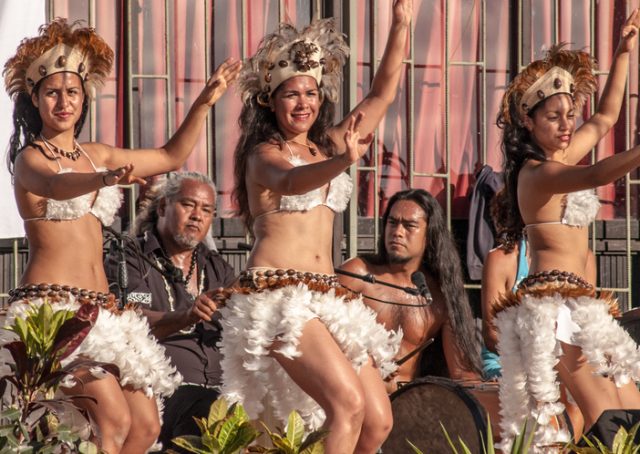
There were historical accounts that the Rapa Nui drank brackish water, but nothing to indicate where they accessed it.
Their surveys found several places where brackish water could be obtained, but the really interesting thing was that the moai statues seemed to be placed where there was water that was fit to drink.
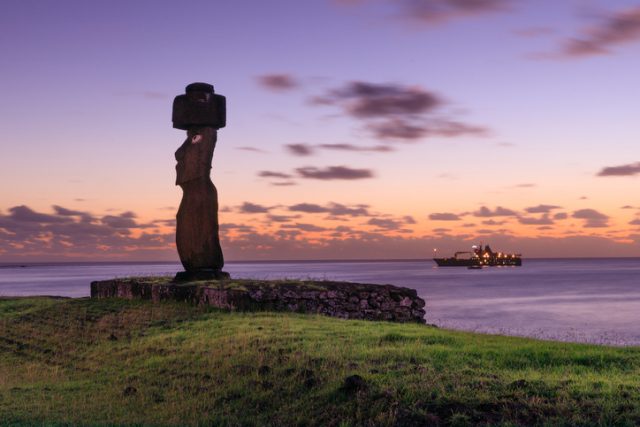
Lipo said “The more we looked, the more consistently we saw this pattern. Places without ahu/moai showed no fresh water. The pattern was striking, and surprising in how consistent it was. Even when we find ahu/moai in the interior of the island, we find nearby sources of drinking water. That was a real surprise.”
Lipo noted that the issue of why the monoliths had been built has always been a central mystery about the civilization which used to inhabit the island.
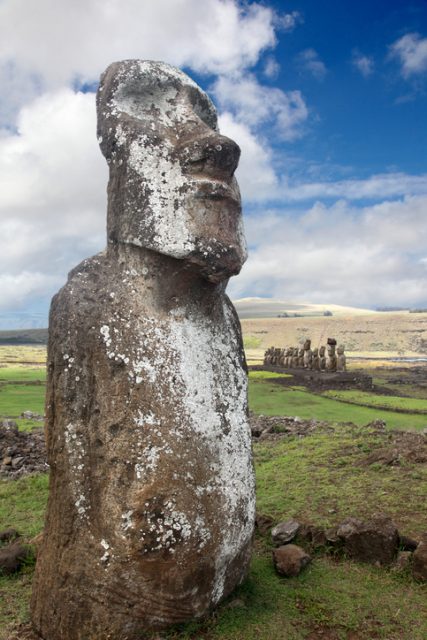
It would be logical to expect that the statues should all be placed in spots where they would be easy to see, especially to outsiders, but that’s not necessarily the case.
Using them as markers of vital natural resources, however, helps explain a lot about their placement.
https://www.youtube.com/watch?v=c4U5Y7MSAJc
It’s his hope that the new insight into the placement of the stones can help scientists unravel more of the mysteries of the statues, but also the culture which created them.
Read another story from us: Archaeologists Discover the Oldest Library in Germany
The Rapa Nui civilization was decimated by the diseases and slave raiding brought by European explorers, but before that, the culture managed to survive for five hundred years in a remote environment with very few natural resources. Lipo would like to be able to further unravel just how they managed to do it.
